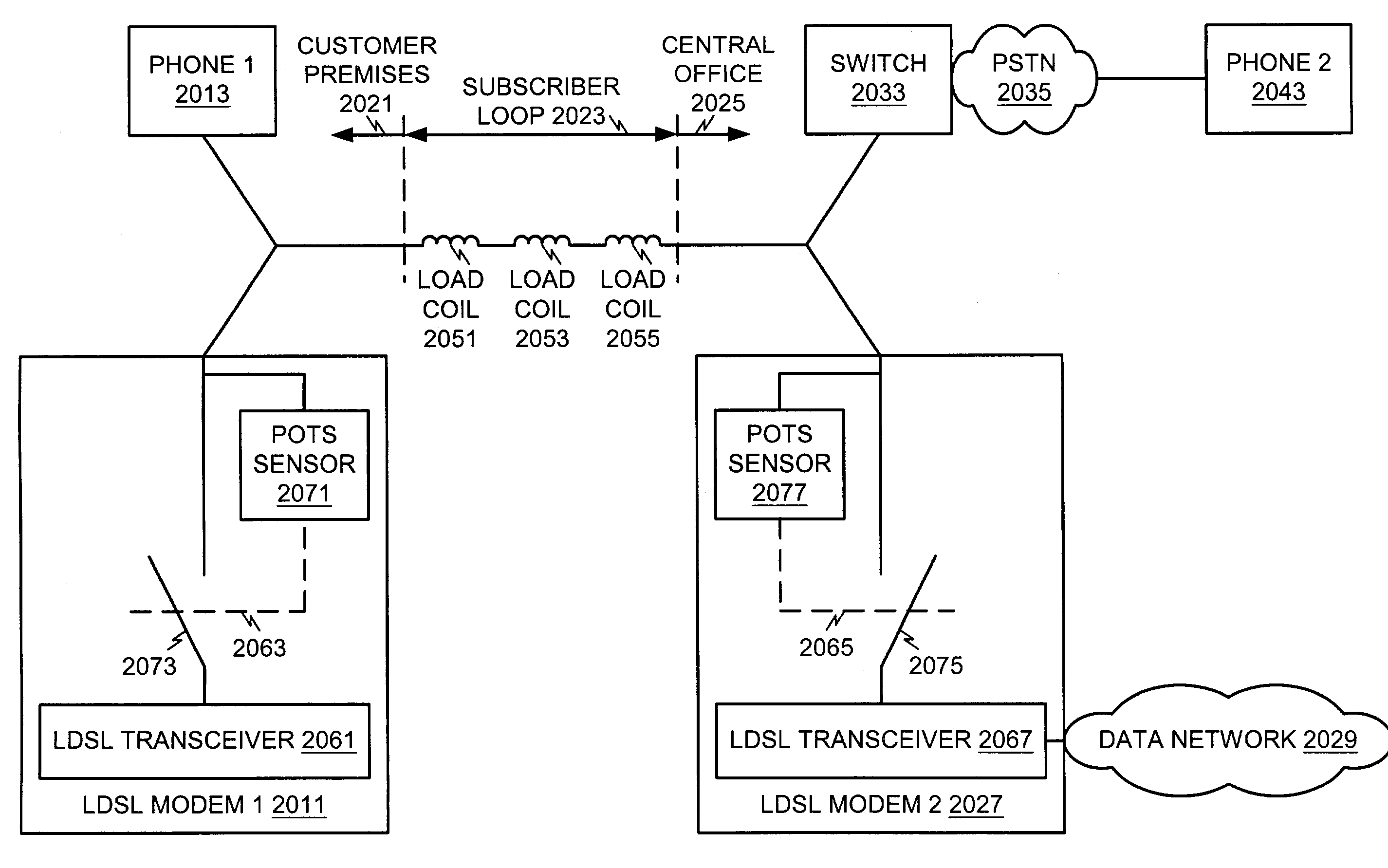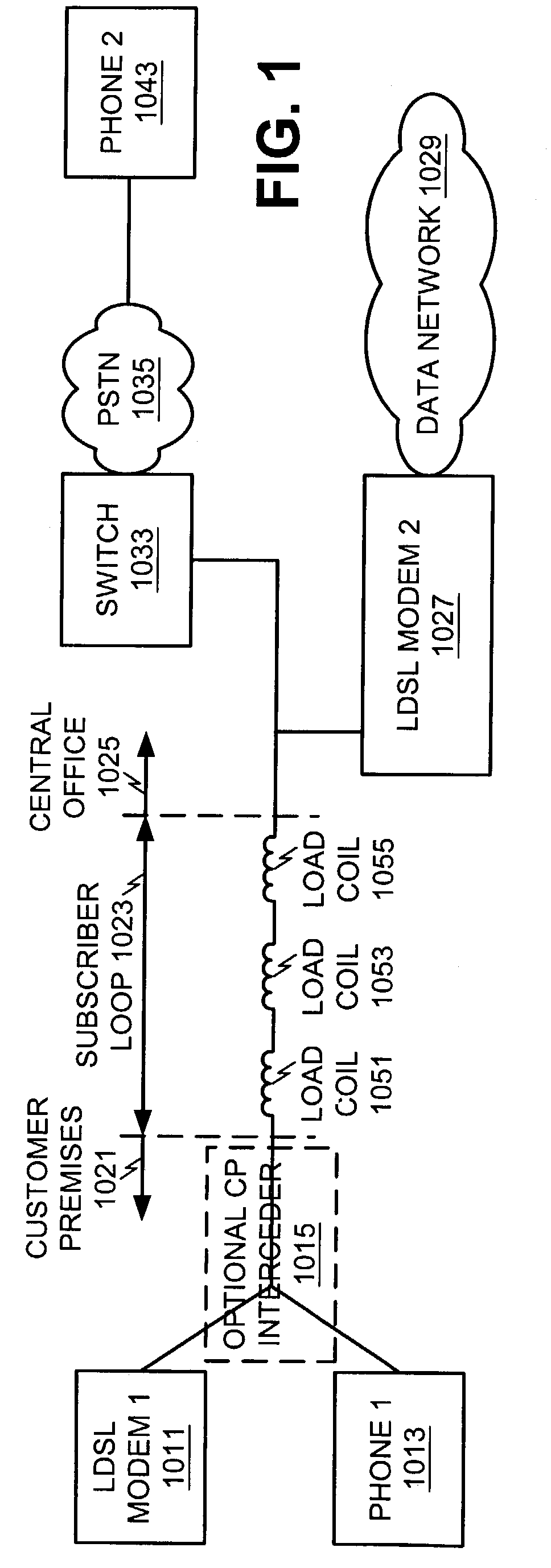Automatic rapid switching between DSL service and POTS over loaded loops
a technology of automatic rapid switching and dsl service, applied in the field of telecommunications, can solve the problems of increasing the cost of major changes to the wiring plant that feeds subscribers, affecting the service quality of dsl, and not being able to meet the needs of many customers located at farther reaches of central office switches, so as to achieve the effect of increasing the availability of dsl servi
- Summary
- Abstract
- Description
- Claims
- Application Information
AI Technical Summary
Benefits of technology
Problems solved by technology
Method used
Image
Examples
Embodiment Construction
[0023]Various types of modulation and / or duplexing techniques can be used to overcome the limitations of load coils. By their nature, the low-pass, frequency-dependent filtering of load coils creates serious adverse effects on duplexing strategies that depend at least in part on frequency as well as on multiplexing strategies that depend on frequency separation to utilize a subscriber loop both for a basic native POTS interface in the 0-4 KHz POTS baseband together with the associated POTS signaling (such as but not limited to, POTS ringing, call waiting, calling line ID, and / or dual-tone multi-frequency (DTMF) or pulse / rotary dialing) and for DSL service. One skilled in the art will be aware of the differences between a native POTS interface on a subscriber access line or loop and a derived or synthesized voice call functionality that may be provided through a local POTS interface off of customer premises equipment (CPE) that connects to one or more digital channels or digital medi...
PUM
 Login to View More
Login to View More Abstract
Description
Claims
Application Information
 Login to View More
Login to View More - R&D
- Intellectual Property
- Life Sciences
- Materials
- Tech Scout
- Unparalleled Data Quality
- Higher Quality Content
- 60% Fewer Hallucinations
Browse by: Latest US Patents, China's latest patents, Technical Efficacy Thesaurus, Application Domain, Technology Topic, Popular Technical Reports.
© 2025 PatSnap. All rights reserved.Legal|Privacy policy|Modern Slavery Act Transparency Statement|Sitemap|About US| Contact US: help@patsnap.com



